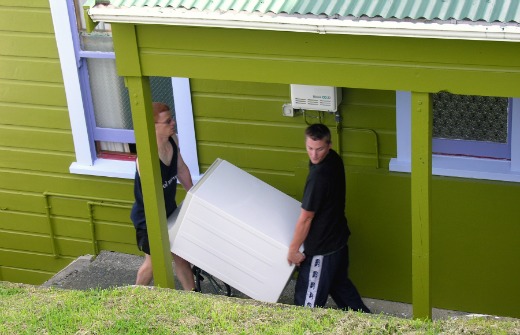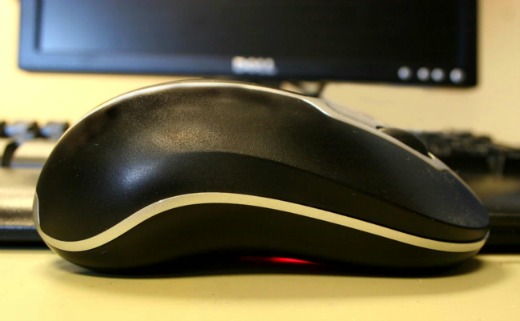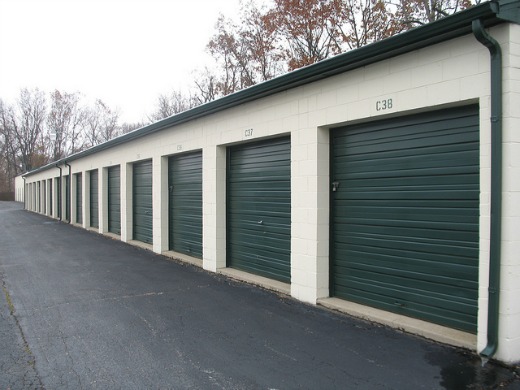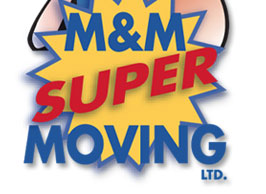Protect Your Back When Moving Major Appliances
Comments Off on Protect Your Back When Moving Major Appliances

One of the most physically challenging aspects of moving to a new area is transporting your major home appliances. With a typical washing machine weighing as much as 170 pounds, carrying it by yourself isn’t always feasible. And even if you can carry it, doing so could place you at risk for injury, which is something you probably want to avoid on moving day. To make the process a little easier, we have some tips on how to move your major home appliances.
Refrigerator
Remove all food, beverages, condiments, food and other items items from your refrigerator and freezer. Ideally, you should consume your refrigerated perishables in the weeks leading up to your move. Any remaining food can then be stored in a cooler or a friend/family member’s refrigerator.
After removing everything from the inside of your refrigerator and freezer, unplug it from the wall outlet and let it sit for at least 24 hours. If it has an ice maker and water dispenser, you’ll also need to disconnect it from the waterline before moving it.
Dishwasher
Remove (and pack) any dishes inside your dishwasher. If the unit contains any removable racks or baskets, go ahead and pack them separately to reduce the risk of damage. When you are finished, place a strip of tape across the front of the door to ensure it remains shut during transit.
Washing Machine
Disconnect the washing machine from the power outlet, waterline and drain line. It’s important to note that you must first turn the waterline off before disconnecting it; otherwise, you could flood the place. It’s not uncommon for tenants and homeowners to forget or overlook this step, at which point the waterline floods the residence when the service is reactivated. Always make sure the water is turned to the “off” position before disconnecting your washing machine from the line.
Dryer
The steps to preparing a dryer to move varies depending on its power source. Electric models are prepared simply by unplugging the unit at the wall outlet. Gas models, on the other hand, are bit a more difficult and usually require the assistance or expertise of the gas supplier. If you own a gas-powered dryer, contact your gas company for more information on how to disconnect and move it.
Major Home Appliance Moving Tips:
- Use a hand cart (dolly) to move your major home appliances.
- Keep your refrigerator upright the entire time.
- Tape any loose cords and lines to the side of your unit.
- Find a buddy to help you carry your appliances up stairs
- Pick up your appliances by bending your knees, not your back.
Our team of moving professionals are here to help. We specialize in making your move as easy and stress-free as possible and we would love to help with your next move. Get a free online moving quote today.
Read more home moving tips here.
Published in categories: Home Moving Tips
Don’t Forget Your Child’s School Records When You Move!
Comments Off on Don’t Forget Your Child’s School Records When You Move!

Before moving to a new area, parents should first acquire copies of their children’s school records and related academic documents. Whether the child is in elementary, middle or high school, it’s important for parents to prepare themselves for the transition to a new district. Because once you move, you may find it difficult to acquire these critical documents.
School Transcripts
Go to your child’s current/old school to request an official copy of his or her transcript (Cumulative Record File, CRF, permanent record). This invaluable document contains a list of the student’s courses, grades, honors and degrees. It may also contain the number of students in the class, average grades, and other pertinent information.
When requesting your child’s transcript, make sure it’s an official copy with the principle’s original signature. Most schools will only accept official transcripts during the enrollment process. Photocopies are great for your own personal reference, but you need the original copy with the principle or official’s signature when enrolling your child in a new school.
Letters of Recommendations
Parents should also gather any letters of recommendations written from their child’s former teachers and educators. Even if your child doesn’t need them now, prospective job and/or academic opportunities may request letters of recommendations. Having some on hand will set your child apart from other students.
If your child doesn’t have any letters of recommendations, don’t be afraid to ask his or her former teachers, coaches or counselors if they would be willing to write one. Most educators will gladly write a letter of recommendation for a student who’s moving to a new district.
Medical Records
Of course, you shouldn’t forget about your child’s medical records. It’s not uncommon for schools to require a copy of the student’s vaccinations and immunizations when enrolling. Failure to have this information could result in your child’s enrollment being delayed
Make sure you have all medical records readily available when enrolling your child in a new school. Your child’s old school should provide you with a copy if requested.
Other School-Related Documents You May Want To Acquire:
- Awards
- Extra-curricular activities
- Test scores
- Attendance record
- Work samples
This may seem like a lot of documents to acquire, but most schools have this information stored on site. When you’re looking to take a break from packing boxes, make a trip to your child’s school to request the documents mentioned above. Once you receive them, place them inside a special box designated specifically for sensitive records.
Our team of moving professionals are here to help. We specialize in making your move as easy and stress-free as possible and we would love to help with your next move. Get a free online moving quote today.
Read more posts about moving with children here.
Published in categories: Moving With Children
Packing The Home Office: Tips For an Easier Move
Comments Off on Packing The Home Office: Tips For an Easier Move

The home office is one of the more difficult areas to pack and prepare for a move. Being that it typically contains sensitive documents and a moderate amount of electronics, packing it takes a different approach than other areas of the home.
Back Up Your Files
As the saying goes, hope for the best but prepare for the worst, holds true when moving. Hopefully, nothing will happen to your important files, but having backups will give you the peace of mind knowing your data isn’t lost in the event of a hardware or software malfunction.
Create backups of your important files and digital documents, including the following:
- Pictures
- Videos
- MP3s
- Emails
- Passwords (note: encrypt them first)
- Word files
- Spreadsheets
- PowerPoint presentations
Create a Box For Sensitive Paperwork
Now that you’ve taken care of safeguarding your digital files, you should consolidate all of your hard-copy paper files into a single box. This box should include receipts, tax returns, mortgage information (if applicable), bank statements, credit card statements, etc. Place all of these documents into a large, heavy-duty box and label the top “Important: Home Office.”
Rather than loading this box on the moving truck, you should personally transport it to your new home destination. Place your sensitive paperwork box inside your car or truck and hand-deliver it to your new home. Knowing where this box is at all times will make your move just a little less stressful.
Packing Electronics
Now comes the fun part: preparing and packing your electronics. Most home offices have dozens of electronics, including desktop computers, printers, fax machines, phones, routers, and more. Do your best to keep these items separated, dedicating a box for each one. For instance, you could place your computer in one large box and your printer in a smaller box.
It’s also recommended that you include the cables in the respective boxes. Don’t make the mistake of packing all of your home office cables into a single box. When it comes time to set up your office in your new home, you’ll have a mess of nondescript cords and cables. A smarter approach is to keep the cords next to the item to which they belong.
Our team of moving professionals are here to help. We specialize in making your move as easy and stress-free as possible and we would love to help with your next move. Get a free online moving quote today.
Read more office moving tips here.
Published in categories: Moving Your Office
Get a Workout While You Move!
Comments Off on Get a Workout While You Move!

Moving isn’t something that most people enjoy doing, but it’s a necessary part of relocating to a new home. Of course, a side benefit associated with moving is the increased physical activity it offers. Whether you are relocating to a new state or right across the street, you’ll burn calories while promoting greater muscle growth.
The fact is that moving is comparable to a full-body workout at the gym. Lifting heavy furniture and boxes targets muscles in the arms, legs and chest – assuming you lift the right way. The key thing to remember is that you want to lift with your legs by bending your knees. Do not attempt to lift objects – heavy or light – by bending your back. This places unnecessary stress and pressure on the spine, which could result in injury.
How Many Calories Does Moving Burn?
There’s no way to determine exactly how many calories you’ll burn while moving. Several factors play a role in the amount of calories burned while moving, including the individual’s body weight, metabolism, time spent moving, weight of objects moved, and the shape of the objects.
According to the health and fitness website SparkPeople.com a 200-pound person will burn a whopping 1,344 calories by moving boxes for just two hours. Given the fact that most moves last six or more hours, the calorie-burning benefits of this activity are clear to see.
Want To Burn Even More Calories While Moving? Here are Some Tips:
- Work fast. Don’t rush yourself to the point where you risk injury, but maintain a fast, steady pace to burn even more calories.
- Eat a high-energy breakfast with protein and carbohydrates before you start moving.
- If friends or family members are helping you move, offer to carry the heaviest items.
- Drink plenty of water before, during, and after you move to prevent muscle cramps and dehydration.
- Instead of using a hand cart to transport boxes, lift them and carry them yourself.
- Listen to your body and take breaks when needed.
- Unpacking can also burn calories, so don’t stop once you’ve finished moving.
The next time you need help moving, call up some of your buddies and inform them of the calorie-burning benefits of moving. At the end of the day, you (and your buddies) will probably feel physically exhausted, which of course is a sign of a good workout.
Just keep this in mind. If you’re paying your friends back with pizza and beer when you’re done , the calorie burning benefits could be completely eliminated.
On the other hand, you could call us and avoid the entire hassle of moving and go to the gym for your workout.
Our team of moving professionals are here to help. We specialize in making your move as easy and stress-free as possible and we would love to help with your next move. Get a free online moving quote today.
Read more home moving tips here.
Published in categories: Home Moving Tips
Ways To Earn Cash For Unwanted Items Before You Move
Comments Off on Ways To Earn Cash For Unwanted Items Before You Move

Selling some of your unwanted items before you move will make the process of relocating easier while putting some extra cash in your pocket. Nearly every family has a “junk” room or closet in which they store furniture, electronics, clothes, home décor accessories, and other items they no longer need or want.
Choose What To Sell and What To Keep
Go through your belongings and pull out any unwanted and/or unused items that you wish to sell. If you have an extra set of bedroom furniture that’s taking up space, now is the perfect time to get rid of it. Keeping them will only require you and anyone else who’s helping you move to work extra hard. The more stuff you’re willing to get rid of, the easier it will be to move.
Host a Yard Sale
There are dozens of ways to sell unwanted furniture and items, but one of the easiest it to host a yard sale. Clear your calendar for an upcoming weekend in which you can set up a yard sale. Weekends are preferred because this is when most people have off work, so you’ll generally attract more customers.
You can read the post mentioned above for more yard sale tips, but the bottom line is that you want to get rid of as much stuff as possible. Don’t be afraid to negotiate with customers, lowering the price to make a sale.
Online Auction Sites and Classified Ads
Any remaining items should be listed on auction sites like eBay and classified ad sites like Craigslist. Auction websites are typically the preferred choice for selling smaller items since you or the buyer will have to pay for shipping. Craigslist, on the other hand, is a better choice for selling large items like furniture since there’s no shipping involved.
Donate The Rest
What should you do with your leftover items that didn’t sell? Assuming you no longer want them, and don’t want to deal with hauling them to your new home, you could donate them to a charity organization. Doing so will allow you to help struggling individuals and families who are less fortunate. And depending on which organization you choose, you may qualify for a tax-deductible donation receipt.
Goodwill is a reputable nonprofit charity organization that accepts donations of all types. You can also check your local phone book to see if there are any charity organizations that are willing to come and pick up your remaining items.
Our team of moving professionals are here to help. We specialize in making your move as easy and stress-free as possible and we would love to help with your next move. Get a free online moving quote today.
Read more home moving tips here.
Published in categories: Home Moving Tips, Preparing To Move
Self-Storage Units To Make Moving Easier
Comments Off on Self-Storage Units To Make Moving Easier

Renting a self-storage unit can make moving into a new home easier and less stressful. The thought of moving your belongings into a self-storage unit, and then moving it into your new residence may sound counterproductive. After all, why would you want to include another step in the already tedious task of moving? Well, there are several unique advantages to renting a self-storage unit when you move, some of which we’re going to discuss here.
The truth is that most families don’t know just how much stuff they own until they get ready to move. From fine china and seasonal clothes to old kids’ toys, furniture, and electronics. You may assume that it will only take a single truck load to move your belongings into your new home, but once you start moving, you’ll realize it will take several.
Temporarily Store Large Items
You can make moving a little bit easier by investing in a self-storage unit. Once you’ve rented a self-storage unit, you can transport some (or all) of your large/heavy items here long before your moving day. Rather than spending the bulk of your moving day carrying large items like couches, beds, dressers, and other furniture, you can focus on the smaller stuff. So perhaps you can finish moving in just single truck load instead of making two or three truck loads.
De-Clutter Your Current Residence
Renting a self-storage unit will also clear out some space in your current residence, allowing you and any professional movers to get around more easily. It’s often difficult to move boxes, furniture and other items through a cluttered home. You may trip and stumble on something, causing the box to spill to the floor below. Moving the clutter out of your home and into a self-storage unit will reduce the risk of this happening.
Downsizing? Rent a Self-Storage Unit
If you are downsizing to a smaller residence, you’ll likely find a self-storage unit to be an invaluable asset. Trying to force all of your belongings into a smaller home won’t work. Even if you can physically get them in the door, you’ll probably find furniture and boxes cluttering the floor and restricting the normal use of your home.
Don’t allow your new home to turn into a cluttered home. Whether you are downsizing or upsizing, consider renting a self-storage unit to make the process run a little smoother. You can use it for temporary storage, or you can keep things here for months of even years. Self-storage units are a great way to clear out space while reducing the labor required on your moving day.
Our team of moving professionals are here to help. We specialize in making your move as easy and stress-free as possible and we would love to help with your next move. Get a free online moving quote today.
Published in categories: Storage
Should I Hire a Home Inspector Before Moving?
Comments Off on Should I Hire a Home Inspector Before Moving?

Hiring a home inspector is an important step in the process of buying a new home. It allows you to identify potential problems before you sign a mortgage agreement. Some problems in homes are obvious and easy to identify, such as cracking foundation, but other problems are more discreet and require the keen eye of an experienced home inspector.
Purpose of a Home Inspection
A typical home inspection consists of a thorough inspection of the home’s major systems, including (but not limited to) the foundation, water heater, exhaust vents, bathrooms, siding, roof, plumbing, electrical, heating ventilation and cooling (HVAC), and drainage. Depending on the home’s size, age and location, it may last anywhere from two to four hours.
Although not required, it’s recommended that buyers accompany the home inspector during the inspection. During the inspection, you can ask questions about potential problems and areas of concern. Reputable home inspectors should willingly allow you to accompany them during the inspection.
Once the inspection is complete, the home inspector will create a detailed written report of any safety issues, defects, items that need replacing and/or servicing, and items that should be monitored. File this report in a safe location so you can easily access it in the future.
When To Hire a Home Inspector
It’s not uncommon for potential home buyers to submit a purchase offer on a home under the contingency of a home inspection in which no major problems are identified. In other words, you can submit an offer before hiring a home inspector. If the home inspector finds any serious underlying issues, however, you are free to withdrawal your offer.
Tips on Choosing a Professional Home Inspector:
- Check to make sure the home inspector is licensed in the respective state of which you are moving (note: some states do not require licensing).
- Visit the Better Business Bureau’s (BBB) website for standing and resolved complaints.
- Check to see if the home inspector is a member of any organizations like the American Society of Home Inspectors, the National Society of Professional Engineers, or the National Institute of Building Inspectors.
- Look for past customer reviews on sites like Yelp.com and Angie’s List.
- If you are purchasing a special type of property, such as a commercial building, ask the inspector if he or she has experience with this type of property.
Home inspections aren’t cheap (usually cost several hundred dollars), but it’s a smart investment that can save you time, money and heartache in the long run.
When you are ready to move our team of moving professionals are here to help. We specialize in making your move as easy and stress-free as possible and we would love to help with your next move. Get a free online moving quote today.
Read more posts about buying or selling a home here.
Published in categories: Buying Or Selling A Home, First Time Home Buyer Wisdom, Preparing To Move
Questions To Ask When Hiring a Professional Moving Company
Comments Off on Questions To Ask When Hiring a Professional Moving Company

When hiring a professional moving company, there are a few basic questions you should ask. By asking these questions, you’ll have a better understanding of whether or not the company will meet your needs. Each and every moving situation is unique, which is why it’s important for individuals and families to selectively choose the right company for the job.
Do You Hire Subcontractors?
It’s not uncommon for moving companies to outsource some (or all) of their work to subcontractors. So even if you call and hire a specific moving company, it doesn’t necessarily mean they will handle your belongings. It’s important to note, however, that the parent/brokering company is not responsible for lost or damaged items; the subcontractor holds this responsibility.
How Much Do You Charge?
Ask the company for a quote/estimate for your move. Moving companies handle rates in different ways, some of which base their price on weight and distance, whereas others charge by the hour. If a company offers you an attractive rate, request an estimate copy in writing. A professional estimate will include all charges as well as a date.
Are There Any Additional Charges?
Find out if there are any additional charges or fees the moving company may tack on to your final bill. These may include traveling up and down flights of stairs, parking in the street, gas, exceptionally large or awkward items (e.g. grand piano), use of special equipment, etc.
What Insurance Do You Offer?
You’ll probably find that most professional moving companies offer a variety of different insurance types. Typically, insurance is based on weight, such as standard coverage for $0.60 cents per pound. This may or may not be enough to cover the costs of damage, however, so evaluate the weight and value of your belongings to determine whether or not you need additional coverage. Even if you don’t use it, having the added layer of insurance will give you the peace of mind knowing your belongings are financially covered in the event of damage.
Who’s Responsible For Broken or Missing Items?
Moving companies are typically liable for items damaged in transit, but customers should always check the company’s policy before hiring them. The only exceptions when a moving company is not liable for damaged items is when the damage was caused by an act of god, an act of omission by the shipper, an act of the public enemy, an act of the public authority, or inherit vice.
Our team of moving professionals are here to help. We specialize in making your move as stress-free as possible and we would love to help with your next move. Get a free online moving quote today.
Read more posts about full service moves.
Published in categories: Full Service Move, Preparing To Move
Encouraging Friends and Family To Help You Move
Comments Off on Encouraging Friends and Family To Help You Move

No one should be forced to move all of their furniture, boxes and belongings alone. Trying to tackle a move by yourself is a pain-staking, laborious process that will leave you winded at the end of the day – not to mention the fact that you’ll probably need a second set of hands to help you with large items like couches, televisions, dressers, etc.
But moving isn’t exactly a fun activity on which people want to spend their free time. So, how are you supposed to convince your friends and family members to lend you a hand?
Start by letting them know in advance. Don’t wait until the day before (or the day of) your move to ask your friends and family members to help you move. Once you’ve chosen a date for your move, call and let everyone know when it’s taking place and where to show up. By doing so, friends and family members can request time off from work to help you move.
There’s no better way to start your moving day off than by eating a good hearty breakfast. If you want to convince others to lend you a hand, pick up a large breakfast for everyone to enjoy. Free meals are always a plus, and loyal friends will gladly offer their labor and time in exchange for a delicious breakfast. It’s unlikely that you’ll be able to cook with all of your pots and pans already packed, so just pick up a large breakfast for everyone from a local diner or fast-food joint.
Of course, you can also pick up the tab for lunch as well. Free meals are always a plus, and you’ll find that most friends and family members will gladly help you move in exchange for free breakfast and lunch.
Another simple yet effective way to convince friends and family members to help you move is to offer to return the favor in the future. The average family in the U.S. moves about once every ten years. Let your friends and family members know that you’ll assist them with their move when they are ready. This may be next month, or it may be ten years from now. By offering to return the favor, you’ll find more people are willing to help you out.
Bribery goes a long ways in convincing friends and family members to help with a move. If you’re struggling to convince others to help you move, try bribing them with free sports tickets, movie outings, parties at your new residence, etc.
If your friends and family aren’t willing or able, our team of moving professionals are here to help. We specialize in making your move as easy and stress-free as possible and we would love to help with your next move. Get a free online moving quote today.
Read more Home moving tips here.
Published in categories: Home Moving Tips, Stress-Free Moving
Protect Yourself Against Heat Illness When Moving In Summer
Comments Off on Protect Yourself Against Heat Illness When Moving In Summer

Many individuals and families prefer to move during the summer. This is a time when children are out of school and adults are on vacation, so it only makes sense to plan a move during this time. Moving in summer, during the blistering-hot months of June, July and August, can leave you susceptible to heat illness, especially if certain precautions are not taken.
According to data presented by the Centers For Disease Control and Prevention (CDC), approximately 7,415 people died from heat-related illness from 1999 to 2010, which translates into 618 per year. Exposure to hot temperatures for a prolonged length of time can hinder the body’s ability to regulate its internal temperature, which subsequently leads to heat illness.
Early Symptoms of Heat Illness May Include:
- Excessive perspiration
- Dry mouth
- Increased heart rate
- Chest pains
- Fatigue
- Vertigo
- Dizziness
- Cramps
The two most common types of heat illness are heat exhaustion (less severe) and heat stroke (more severe).
Heat exhaustion is characterized by a loss of moisture and electrolytes. The body’s natural temperature-controlling mechanism is to sweat, but excessive sweating can lead to a loss of moisture and key electrolytes. If not treated, heat exhaustion may lead to heat stroke.
Heat stroke is defined by an internal body temperature greater than 40.6 °C (105.1 °F). Normally, sweating is enough to keep the body cool, but exposure to extreme heat can hinder this mechanism. If you or someone you know is suffering from heat stroke, call 911 immediately!
Tips To Prevent Heat Illness When Moving:
- Plan to move during the early morning or late evening hours. The hottest time of the day usually occurs between 4 p.m. and 6 p.m.
- Stay hydrated by drinking plenty of fluids before, during and after you move. Note: you should avoid drinking heavily caffeinated beverages, as this may further dehydrate you.
- Call the utility companies to ensure your electricity is running to your new home. This will allow you to turn on the air conditioner while you move your furniture and belongings.
- Take breaks to cool off when needed.
- If possible, park your moving truck in a shaded area.
- Place a wet towel around your head and neck for quick relief of heat.
- Set up oscillating fans around doorways and entry points.
- Dress in light, breathable clothes.
You can avoid this possibility by hiring our team of moving professionals. We specialize in making your move as easy and stress-free as possible and we would love to help with your next move. Get a free online moving quote today.
Read more Home moving tips here.
Published in categories: Home Moving Tips





